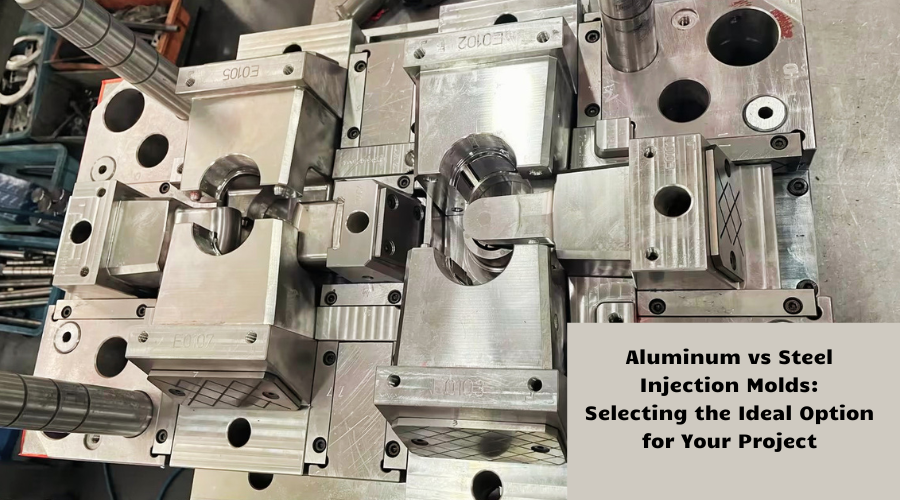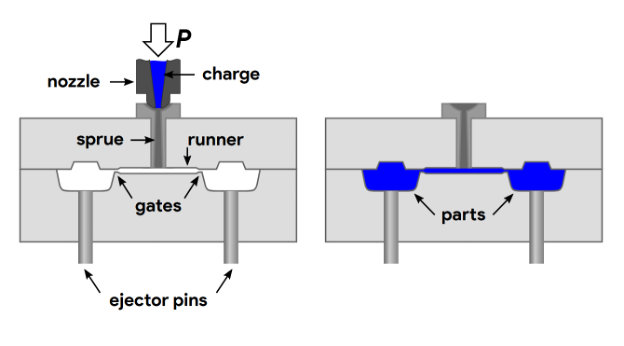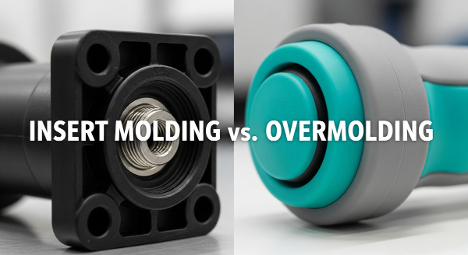When it comes to selecting the right material for injection molds, aluminum and steel are two popular choices. Each material comes with its own set of advantages and limitation. In this article, we delve into the characteristics of aluminum and steel injection molds to help you make an informed choice.

Reasons for Using Aluminum or Steel Molds in Injection Molding
Injection molding is a highly efficient manufacturing process used to produce parts in large volumes with high precision and consistency. Here are some reasons for using aluminum or steel molds in injection molding:
1. Material Compatibility: Aluminum and steel molds are compatible with a wide range of materials used in injection molding, including various plastics, elastomers, and metal. This versatility allows manufacturers to produce parts for different applications and industries.
2. Durability and Longevity: Both aluminum and steel molds offer durability and longevity, but to different extends. Steel molds are known for their exceptional hardness and durability, making them ideal for high-volume production runs. Aluminum molds, while not as durable as steel, offer sufficient strength and longevity for low to medium-volume production runs.
3. Precision and Detail: Aluminum and steel molds can both achieve high levels of precision and detail in molded parts. However, steel molds are often preferred for applications that demand extremely tight tolerances and intricate details due to their superior strength and hardness.
4. Heat Dissipation: Efficient heat dissipation is crucial in injection molding to facilitate rapid cooling of the molten material and minimize cycle time. Both aluminum and steel molds offer good thermal conductivity, allowing for efficient heat dissipation during the molding process. This results in shorter cycle times and increased productivity.
5. Cost-effectiveness: The choice between aluminum and steel molds depends on various factors such as production volume, part complexity, material requirements, and budget constraints. While aluminum molds generally have lower upfront costs, steel molds offer superior longevity and performance, resulting in lower overall costs over the lifespan of the mold.
6. Surface Finish: Both aluminum and steel molds can produce parts with smooth surface finishes and intricate details. However, steel molds are often preferred for applications that require extremely fine surface finishes and tight tolerances due to their superior hardness and precision.
7. Application Flexibility:Whether it’s automotive components, consumer products, medical devices, or electronics, aluminum and steel molds can be used across various industries and applications. Their versatility allows manufacturers to produce a wide range of parts with consistent quality and performance.
Factors to Consider Before Selecting Aluminum or Steel Molds
Before choosing between aluminum or steel molds for injection molding, there are several important considerations to take into account:
1. Production Volume: The volume of parts needed will significantly impact the choice of mold material. Aluminum molds are suitable for low to medium-volume production runs due to their lower exceptional durability and longevity.
2. Part Complexity: The complexity of the parts to be molded will influence the mold material selection. For simple parts with less intricate details, aluminum molds may suffice. However, for parts requiring high precision and intricate details, steel molds are typically preferred due to their superior strength and ability to maintain tight tolerances.
3. Material Compatibility: Consider the material being used for injection molding. Some materials, such as high-temperature plastics or abrasive materials, may require the use of steel molds due to their superior heat resistance and durability.
4. Cost Considerations: Evaluate both upfront costs and long-term costs associated with the mold material. Aluminum molds generally have lower upfront costs but may require more frequent maintenance and replacement, leading to higher operational costs over time. Steel molds have higher upfront costs but offer superior longevity and performance, resulting in lower overall costs over the lifespan of the mold.
5. Lead Time: Consider the lead time required for mold production. Aluminum molds can be manufactured and machined more quickly than steel molds, making them a preferred option for projects with deadlines or rapid prototyping needs.
6. Expected Lifespan: Assess the expected lifespan of the mold based on the projected production volume and material requirements. Steel molds have a longer lifespan compared to aluminum molds, making them a better investment for projects with high-volume production and long-term production needs.
7. Heat Dissipation Requirements: Evaluate the heat dissipation requirements of the molding process. Aluminum molds have good thermal conductivity, allowing for efficient heat dissipation and shorter cycle times. However, steel molds can also achieve satisfactory cooling performance with proper design considerations and cooling systems.
8. Maintenance and Repairs: Consider the maintenance and repair requirements of the mold material. Aluminum molds may require more frequent maintenance and repairs due to their softer nature and susceptibility to wear and tear. Steel molds generally require less maintenance and are more resistant to damage, resulting in reduced downtime and production interruptions.
Conclusion
By carefully considering these factors and weighing the advantages and disadvantages of each mold material, you can make an informed decision on whether to choose aluminum or steel molds for your injection molding project. Ultimately, the goal is to select the most suitable mold material that meets your project requirements for production volume, part complexity, material compatibility, cost, lead time, expected lifespan, heat dissipation, and maintenance needs.
-q4gvl4k29y4hq8j9rjpapvj0ft06fje63olt7p210i.png)


